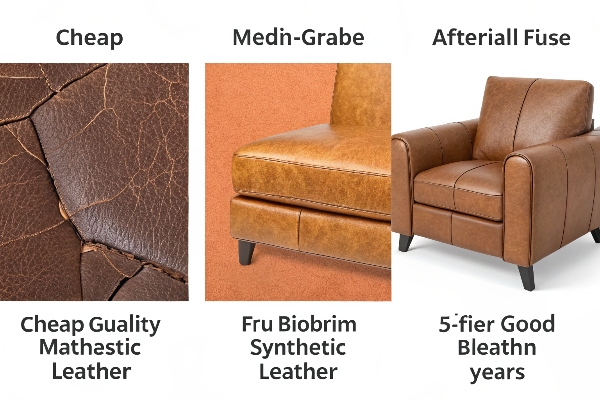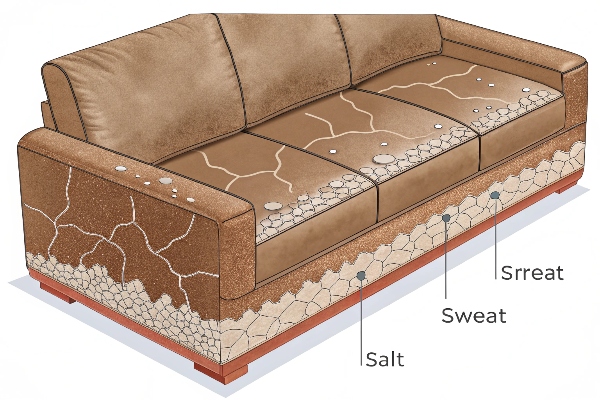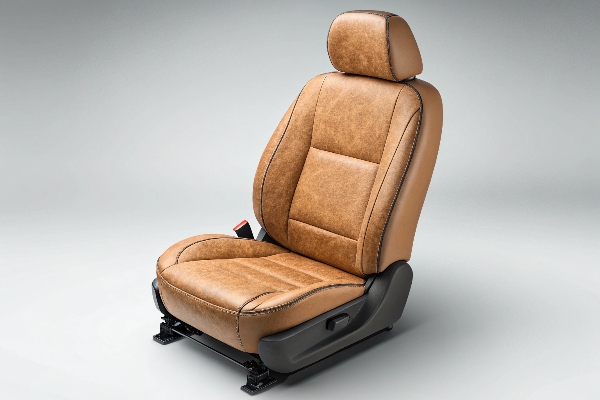I see buyers panic when a favorite seat starts flaking. The fear of ugly cracks stops many from choosing synthetic leather. I feel that pain and want to solve it.
Faux leather can peel or crack if its plastic coating dries out, if the fabric backing pulls apart, or if harsh cleaners strip protective oils. Quality material and gentle care prevent most damage.

You may wonder if all faux leather fails the same way or if time, climate, and price matter. Stay with me—I will break down real timelines, hidden causes, and easy fixes so you can choose wisely and keep your pieces looking sharp.
How long does it take faux leather to crack?
It hurts when a chair that looked perfect in the store starts forming tiny lines months later. That first crack makes you worry every use will make it worse.
Cheap faux leather can crack in six months under daily stress. Mid-range products last three to five years, while premium microfiber or bio-based PU can remain smooth beyond seven years if kept clean and moisturized.

What drives the timeline?
| Factor | Fast Crack (≤1 yr) | Medium (2-5 yrs) | Slow (6 yrs+) |
|---|---|---|---|
| Coating thickness | <0.1 mm | 0.15 - 0.25 mm | >0.3 mm with micro-layer |
| Plasticizer quality | Recycled, volatile | Standard PU | Non-migrating, bio-based |
| Backing fabric | Weak jersey | Twill or woven | High-tenacity microfiber |
| Climate & UV | Humid + high UV | Normal indoor | Climate-controlled |
| Care routine | None | Wipe monthly | Clean + condition quarterly |
I test samples by folding them 10,000 times. Thin PVC usually splits around cycle 2,000. A thicker PU passes cycle 6,000. Microfiber PU often reaches 10,000 without damage.
That lab data mirrors field feedback from my clients in the Middle East, where seats bake in 45 °C heat. Good material costs a bit more up front yet saves you the headache of early replacement.
Does faux leather peel?
Seeing flakes on your clothes is embarrassing. You may think peeling is fate and nothing can stop it. That dread keeps many from ever picking faux leather again.
Peeling happens when the bonded film separates from its fabric base. Constant rubbing, sweat salts, or solvent cleaners dissolve the glue layer and cause sheets to lift like dried paint.

What causes the film to lift?
Surface wear zones
Elbows, seat edges, and steering-wheel rims face friction every day. Tiny cuts appear, moisture creeps under, and large sheets peel.
Chemical attack
Bleach wipes strip plasticizers. Alcohol sanitizers dissolve coatings. I show buyers simple pH-neutral soap instead.
Heat cycling
Car interiors swing from freezing nights to hot noon. Expansion and contraction loosen the bond.
| Cause | Symptom | Quick Fix | Long-term Fix |
|---|---|---|---|
| Abrasion | Rough patches | Use slip cover | Upgrade to higher Martindale rating |
| Sweat & Oils | Sticky feel | Mild soap wipe | Opt for breathable microfiber |
| Harsh cleaners | Color dulls | Rinse with water | Use water-based cleaners only |
One customer in Africa stored bar stools under a metal roof. By month four, flakes covered the floor. We switched them to recycled-PET microfiber with a 0.3 mm PU film. Two years on, no peeling reported. The right match stops the issue before it begins.
How do you keep faux leather from peeling and cracking?
You might feel maintenance is hard or expensive. I once thought so too until routine steps saved me a costly car-seat overhaul.
Keep faux leather clean, hydrated, and out of extreme heat. Wipe spills fast, use pH-neutral soap, apply a water-based conditioner quarterly, and add shade or window film to cut UV.

My simple three-step routine
1. Gentle cleaning
Mix mild dish soap and warm water (1 : 20). Wring a microfiber cloth. Wipe the surface. Dry with a soft towel.
2. Light conditioning
Spray a silicone-free PU conditioner. Buff in circles. This replaces lost plasticizers and keeps the film flexible.
3. Smart protection
Use seat covers during long parking under sun. For furniture, place pieces away from heating vents.
| Task | Frequency | Time Needed | Cost |
|---|---|---|---|
| Soap wipe | Monthly | 5 min/m² | <$1 |
| Condition | Quarterly | 3 min/m² | $2 |
| UV shade | Daily | Instant | $10 one-time |
I follow this plan for the demo sofa in my showroom that hundreds sit on weekly. Three years later, visitors still think it is new. Small habits beat big repairs.
How long does faux leather last?
People ask me if it is worth paying more for faux leather when they fear it will not last as long as real hide. I have wrestled with that decision for my own projects too.
With good material and basic care, faux leather products last three to ten years indoors and up to seven years in vehicles. Premium microfiber PU can stretch past a decade, rivaling mid-grade natural leather.

Lifespan by segment
Furniture
Indoor sofas with breathable PU typically last 5-8 years before noticeable wear. I have placed samples in hotels that still look fresh after six.
Automotive
Steering wheels see sweat, sun, and twisting hands. Standard PU lasts 3-5 years. My bio-based, scratch-resistant grade adds two more years.
Footwear & Bags
Bags avoid heavy abrasion, so faux leather there often reaches 6-10 years. Shoes flex every step, so expect 2-4 years unless you pick microfiber lining.
| Product | Economy PVC | Standard PU | Microfiber/Bio-PU |
|---|---|---|---|
| Sofa | 2-3 yrs | 5 yrs | 7-9 yrs |
| Car dash | 18 mo | 4 yrs | 6 yrs |
| Tote bag | 3 yrs | 6 yrs | 8-10 yrs |
I tracked a batch of vegan-leather backpacks we supplied to a European brand. After five years of everyday use, 92 % showed only minor creases, no peeling. The blend included recycled PET backing and a 0.25 mm PU topcoat—a small upgrade that delivered big brand loyalty.
Conclusion
Faux leather can stay smooth for years when you choose thicker, high-grade PU or microfiber and follow a simple clean-and-condition habit. Smart choices beat peeling every time.
